‘Vindjammers’ – the button accordion or
Squeezebox in German-Queensland Culture!
Unknown squeezebox player with accompanying violin player. Photograph from the Lockyer Valley.
And of course when it comes to German settlers and their unique and traditional music we cannot forget the old ‘Vindjammer’, or button accordion (squeezebox). Nearly every German-Queensland farming family had one, or more in stock. Single row, double-row and three-row diatonic accordions. I have spent upwards of 25 years learning and recording the old tunes – waltzes, schottese, barn dance, polka and mazurka tunes. Each region, and player, has their own suite of tunes – many un-named or learnt from other, often older, players or forebears. Often the regional migration of German pioneering farming communities within southern Queensland is ‘mirrored’ by button accordion tunes and their variants. For instance many of the tunes found in the Kingaroy district (Burnett) are related to older tune forms found in the Lockyer Valley – from where many of the settlers had migrated from to open up new farming selections and communities.
Many older farmers were masters of the double-row or triple-row instruments and their tunes were often only found in their region. Some tunes may have originally come from Germany, some sound very German-like, but were probably composed here. A study of tune types and player styles is currently being undertaken by myself. Look through any of the large and beautifully produced family history books and it is continually noted that so many of the early settlers, and their descendants, were adept players of the button accordion and many of these folk provided the music for local barn dances, tin kettlings and community events.
Button accordian (squeezebox) music is considered next to Godliness – that’s if you are of German descent in southern Queensland! The importance of accordion music in these farming communities is highlighted by a lovely little yarn related to me by the later Les Moreland of Kenilworth. Les was a ‘mine of information’ on German-Queensland customs and family history and he assured me that this story was true! Pastor Berndt was a beloved Lutheran Pastor who ministered to his flock in the Lockyer valley in the late 1800s. One day after Church, a boy came running home to tell his parents, “Mutti, Fader, you should have seens vhat I seens! Down by der creek vas our Pastor doing a sinful ting. Der vhas Pastor his pipe schmoking but more dan dat he playing sinful songs vas on his vindjammer!”. In those early days in many Lutheran communities the boundaries between religious and secular music, and dance, were too great to bridge.
Many of the older folk still talk about the golden age of old-time German music in the valleys, up on the ‘Downs’ and around the hills and dales of the vine scrub country of the Burnett region. Many of these musical identities, and families, have been immortalized in local legend – and sometimes generations later seem larger than life. For instance any mention of Jack and Augie Gablonski, Fred Harpeng, Herb Schadwell, Augie Schulz or the Staatz brothers in the Lockyer, Bill Hohn or the Naumann brothers on the Downs or Carl Piglich, the Pokarier or Pomerenke brothers or the musical Radunz clan in the southern Burnett, will bring tears of joy to the eyes of many older folk or endear your way into the hearts of many people. Each region had its best players and almost every German home had a squeezebox of some variety sitting in a cupboard or the remains of older instruments scattered in the barn.
Key differences between ‘southern’ OZ traditional
music in general and Queensland traditional music
are:
Obsession with harmony. Southern OZ accordian players use a single line of melody embellished with ornamentation or octaves and concentrate on rhythm. By contrast Queensland accordian players usually play two, three or four notes at a time and carefully harmonise the melody with either right hand, left hand chords or an intricate pattern of both. Southern-style players are found all along the coast of Queensland and the far inland- areas where migration was commonplace. Within the German settlements skilful accordian mastery was regarded as “next to godliness”, and older people still talk with reverence of the old players from more than half-a-century ago.
European cross-row style playing where fingers run between inside and outside row (of two and three row diatonic instruments) to minimise bellows movement. This style suits the fluent phrasing of Queensland tunes and minimises bellows wear. In our region, on the Darling Downs, if a player “crosses the rows” he or she is regarded as a real player! Actually, if some of the beautiful waltz tunes were played on a single row style, they would not sound as effectively as if cross-rowed. It makes you think that maybe some of the tunes were actually “invented” for two or three-row diatonic instruments.
Kinds of tunes played:
Waltzes are profuse, “flowery”, ornate, complex, richly chorded: in a word, schmaltzy. We are told that some of these waltzes are of German origin, whilst others are “home-grown” German-Queensland tunes. In the Lockyer Valley (undilutedly German) they are simpler than the Burnett (Kingaroy district) where an obscure Scandinavian influence creeps into the music. Burnett waltzes have a pulse running through them like waves of the sea – is it the Viking or the lake-dwelling Prussian Uckermarker’s trait? Actually some of the waltzes are played almost identically to how the revivalist Scandinavian button-accordianists (durspel spelman) play them on recent recordings!!
Schottisches are slow, ploddy and contorted in melody lines, more even in rhythm and less syncopated than southern style schottisches. Bass chords are often slow and in half-time rather than the 6/8 style of jiggy schottische played down south. There is frequently a circular-sounding refrain to correspond with the dance. It is likely that some early German Queenslanders wore clogs when they danced. If they had hopped like Bavarians the clogs would surely have fallen off!
Polkas are fast, march-like, strident tunes that lack the hop of the Ballroom polka. March polkas were easily adopted for the quadrilles such as the Lancers and First Set. Another style of polka is the heel-and-toe polka – these polkas were probably part of the original three-or four-part Polka ballroom dance.
Specialist German dance tunes including ‘Herr Schmidt’, ‘Lott ist Tod’, the Berlin Schottische and a unique northern German-derived (possibly Scandinavian) dance from near Maryborough, the “crab dance”. Although the dances are now gone, the tunes still persist in regional repertoires.
George Naumann of Back Plains. Still revered on the Darling Downs as a legendary player.
Well-known dance band from Goombungee with Dick (Herman) Keding on the large 6-stopper ‘vindjammer’
Emil Busch, with the classic pipe in mouth pose, beside his ‘accordion’ music shop in early Russell Street, Toowoomba
Gathering for the oldtime dance at the German community on Island Plantation, near Maryborough. Note the abundance of button accordions in the photograph – typical of dances in rural southern Queensland.
Norm Boughen (left) with fellow old-time musician and nephew, Ron Kerle. Norm and Ron were the ‘kings of the squeezebox’ for many decades in the Marburg and Minden districts of the Lockyer Valley. Both players had very extensive tune and song repertoires learnt from the many old-time accordion musicians and German pioneers of the Lockyer Valley.
‘The Master’ – Alf Radunz of Maryborough. Master of the double-row button accordion and one of 16 children – 15 of which could play the accordion, the other played the radio! I spent many happy days with Alf learning his wonderful range of tunes, many self composed. His beautiful waltz, ‘Moonlight on the Water’ is still one of my favourites. His extensive repertoire is now housed, for all time, in the archives at the National Library of Australia. His identical twin, Otto, was also a very adept player (see the article on Alf Radunz for further details on this remarkable player and his style and tunes).
Fred Harpeng, master bandoneon player from the Lockyer Valley and always ready for a few trinks! A bandoneon is like a chromatic ‘giant’ concertina, very different from the button accordion method. Originating and becoming a folk-style instrument in central Germany, the bandoneon became the instrument of Tango fame in Argentina.
In this section a number of button accordion masters, from different areas of regional southern Queensland and from various German-Queensland cultural backgrounds and origins, will be profiled in a series of articles. Musical samples of their tunes and styles can also be found in the ‘Listen to Music’ samples section.


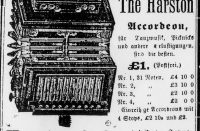
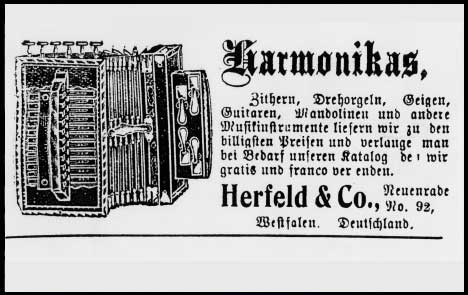
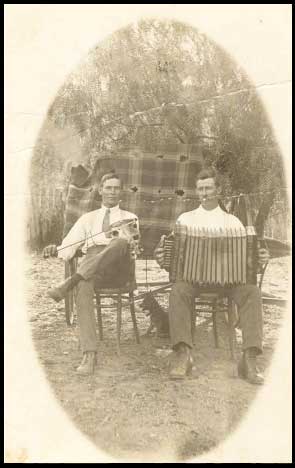
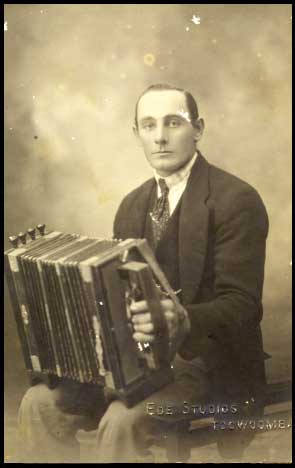
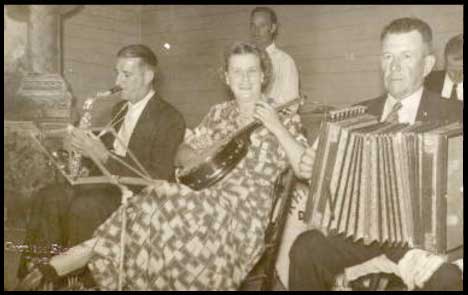
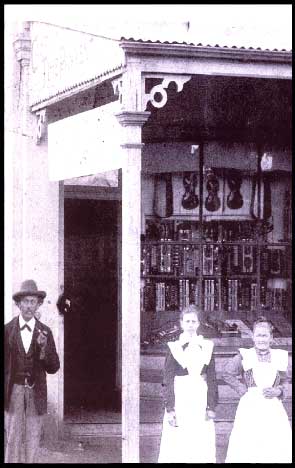
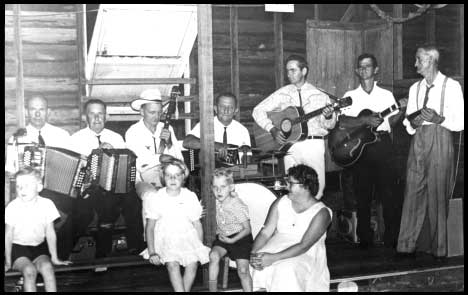
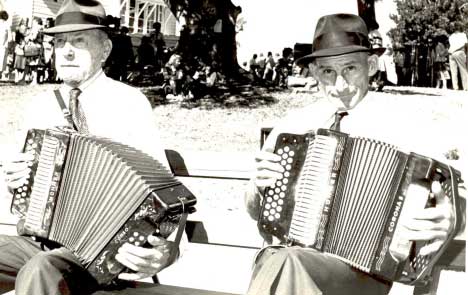
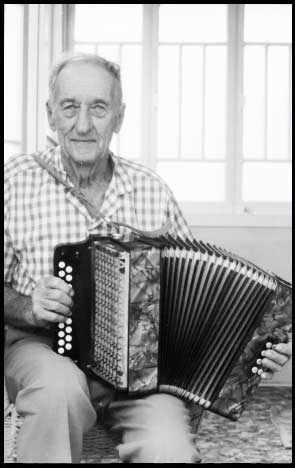
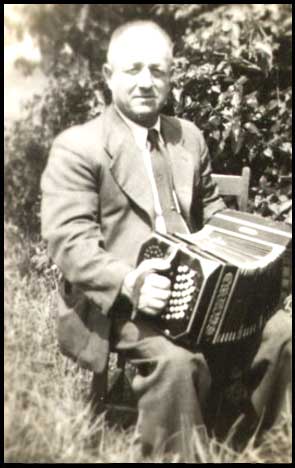

Excellent, good information.
Would be good to hear examples of their playing.